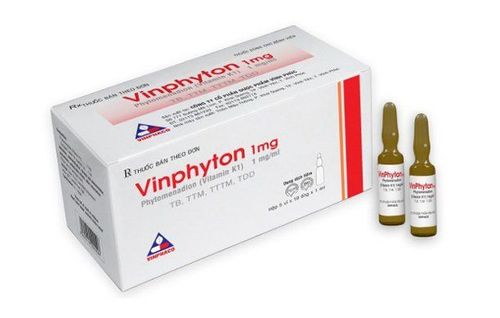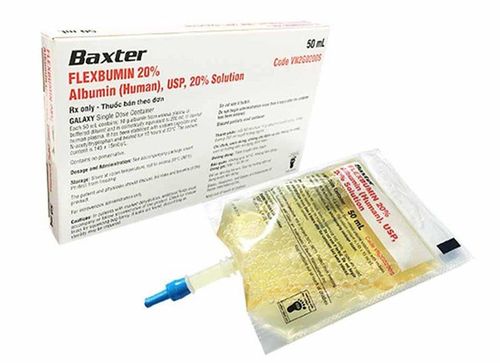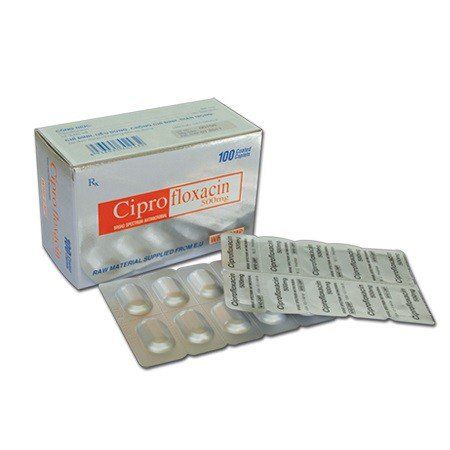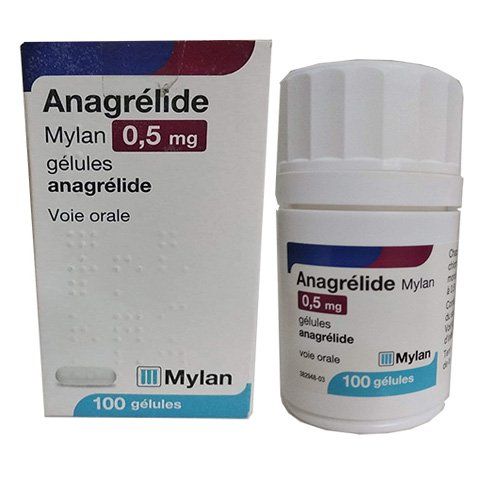This is an automatically translated article.
The article was professionally consulted with Master, Doctor Nguyen Tung Hoanh - Interventional Cardiologist - Department of Resuscitation - Emergency - Vinmec Nha Trang International General Hospital.Massive bleeding that cannot be stopped, causing blood loss, which can be life-threatening. The causes of bleeding are varied and complex. So how dangerous is massive bleeding?
1. Massive bleeding is a very worrisome condition
Abnormal bleeding has many different forms, signs and degrees. Patients may have light bleeding such as unexplained nosebleeds, menstrual disorders (menorrhagia, heavy bleeding, prolonged menstruation) or prolonged bleeding after minor injuries, due to brushing or flossing. ... to massive bleeding in major trauma.
Some hemorrhages may be related to unexplained skin lesions such as the appearance of nodules, spots, purpura (bleeding under the skin or under the mucous membranes), bruising of the sites or varicose veins.
Some hospitalized patients may experience sudden bleeding from the infusion site and sometimes serious bleeding such as gastrointestinal, urinary tract, or multiple sites.
However, some cases of bleeding do not manifest and are only discovered accidentally when the results of blood tests are abnormal, including the loss of a lot of blood causing low hemoglobin or clotting disorders.
Severe or massive bleeding is defined as bleeding that can be fatal, in hazardous locations (eg, intracranial, intraocular, intraspinal, retroperitoneal, intra-articular, pericardial, in muscle), the hemoglobin test falls above 2g/dl or the patient requires a transfusion of at least 2 units of blood.
2. Common causes of massive bleeding
Massive bleeding can be caused by many different causes and mechanisms, but in general, it is the result of the following problems:
Platelet dysfunction: The disorder can be a decrease in platelet count or function or combine both; Blood clotting disorders: May be hereditary or acquired. In which, it is common in patients with continuous anticoagulant use or liver disease (caused by decreased production of hemostatic factors); Dysfunction of the vascular wall.
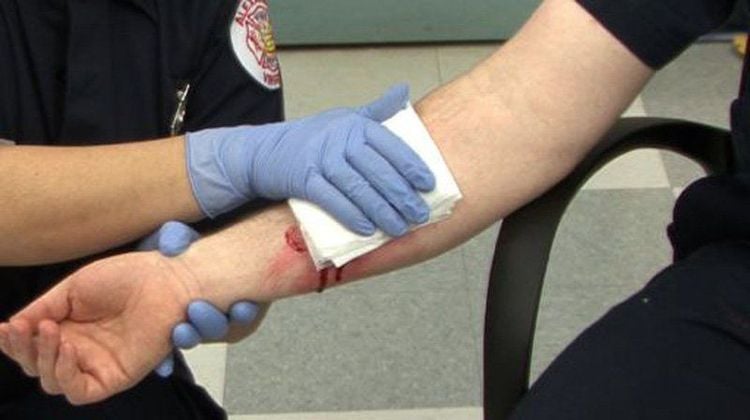
Chảy máu ồ ạt có thể do nhiều nguyên nhân
3. Exploit the signs that accompany massive bleeding
During the medical history, the doctor will determine the location, amount and duration of bleeding, and investigate possible causes of bleeding. For example, if the patient finds himself or herself or has bruises on the skin, then the doctor needs to determine if they have nosebleeds, bleeding gums (especially when brushing teeth), bloody urine or urine. Coughing up blood...
Then, the doctor will ask about your previous medical history, with special interest in conditions that cause platelet dysfunction or blood clotting, including:
Bacterial infections severe, cancer, cirrhosis, HIV infection, pregnancy; History of bleeding, massive bleeding and need for blood transfusion; Family history of previous bleeding or loss of blood; History of drug use, especially anticoagulants (such as heparin, warfarin, thrombin or factor Xa inhibitors), aspirin, and NSAIDs. After asking the patient, the doctor will conduct a thorough examination to detect the physical symptoms:
Symptoms suggestive of heavy blood loss such as increased heart rate, low blood pressure, blue skin, pale mucous membranes or signs of infection severe infection ; Identify signs of bleeding such as bleeding under the skin, submucosa (nose, mouth, vagina), gastrointestinal bleeding (black stools, bloody vomiting, bloody rectal examination), internal bleeding deep tissues (pain on movement, swelling, hematoma in the muscle), brain hemorrhage (patient is lethargic, has neurologic signs); Signs suggestive of liver disease (including ascites, splenomegaly, portal hypertension, jaundice). In general, the physician should pay attention to the following important signs in patients with massive bleeding:
Signs of massive blood loss causing hypovolemia or shock; Pregnant women, women who have just given birth; Signs of severe infection or sepsis .
4. Some special forms of massive bleeding
Some patterns of massive bleeding, especially:
Hemorrhage, abnormal bleeding in patients taking the anticoagulant warfarin is more likely to happen if the patient increases the dose of the drug or takes it together. another active substance capable of interfering with warfarin inactivation. The patient has dilated blood vessels in the face, lips, mucous membranes of the nose and mouth or on the fingertips and toes; Combined family history of massive bleeding may suggest hereditary hemorrhagic vasodilatation. Submucosal and submucosal bleeding is largely due to platelet dysfunction (both quantitative and qualitative) or vascular dysfunction. Hemorrhage, massive bleeding in deep tissues (eg, synovial membrane, intramuscular, retroperitoneal) is often associated with coagulation disorders. Hemorrhagic patients and a family history of massive bleeding suggest genetic causes of coagulopathy (eg, hemophilia), platelet quality disorders, and hereditary hemorrhagic vasodilatation. However, the absence of a family history does not rule out whether the bleeding is related to genetic factors. Unusual massive bleeding in a patient who is pregnant or has just given birth, is in shock, or has a severe infection should raise concerns about disseminated intravascular coagulation (DIC). Bloody stools, low platelet count, fever, and gastrointestinal symptoms are signs of hemolytic uremic syndrome (HUS), which is usually caused by infection with Escherichia coli O157. Patients with alcohol abuse or pre-existing liver disease and massive bleeding are often due to coagulopathy or thrombocytopenia. Patients with a history of drug abuse or unprotected sex may suggest HIV infection.

Chảy máu ồ ạt bất thường ở bệnh nhân có sử dụng thuốc kháng đông máu warfarin
5. Tests to determine the cause of massive bleeding
Laboratory tests to be performed when the patient is bleeding profusely, including:
Complete blood count, which pays attention to the Hemoglobin index and the platelet count; Peripheral blood smear; Coagulation tests: Prothrombin time (PT), partial thromboplastin time (PTT); Bleeding time; Blood clotting time. If the above tests show abnormal results, the doctor will order some other specific tests.
Meaning of coagulation tests :
Prothrombin time (PT) represents the exogenous and common pathway of coagulation (involving coagulation factors V, VII, X, prothrombin, and fibrinogen). ). PT is reflected by the INR (or the ratio of the patient's PT to the laboratory control value). Normal values for PT depend on the laboratory, but are generally between 10 and 13 seconds. In contrast, abnormality was when the INR was greater than 1.5 or the PT lasted more than 3 seconds beyond the laboratory's normal range. The value of the INR is to detect acquired coagulation abnormalities (eg, vitamin K deficiency, liver disease, DIC) and is now also used to monitor response to treatment in patients taking antivitamins. Oral K, warfarin; Partial thromboplastin time (PTT) represents the endogenous and common pathway of coagulation (related to prekallikrein, high molecular weight kininogen, clotting factors XII, XI, IX, VIII, X, and V, prothrombin, fibrinogen). PTT is a representative index for all clotting factors except factor VII (determined by PT) and XIII. A normal PTT value is between 28 and 34 seconds. Causes of PTT prolongation include existence of autoantibodies against factor VIII or autoantibodies against protein-phospholipid complexes); Note: The PT and PTT will not last as long as the coagulation factors are around 70%. Therefore, in order to determine whether the cause is a deficiency of clotting factors or the presence of inhibitors, the above test should be repeated after mixing the patient's plasma with normal plasma (ratio 1: 1). first). This plasma mixture contains at least 50% of all coagulation factors, so when the results are still abnormal, the patient's plasma contains anticoagulants. In case the patient has a low platelet count, a peripheral blood smear test will usually help determine the cause:
If the peripheral blood smear is normal, the patient should be tested for HIV infection . When HIV test remains negative and pregnancy is excluded and no special medication is taken, there is a very high chance that the cause of the massive bleeding is idiopathic thrombocytopenic purpura; If the peripheral blood smear shows hemolysis (erythrocyte debris on the slide, with a decrease in Hb), there is a high probability that thrombocytopenic purpura (TTP) or hemolytic uremic syndrome blood (HUS). Interpretation of some test results in patients with massive bleeding:
Prolonged PTT, normal platelet count and PT: Suggestive of hemophilia (A or B). At that time, the patient needs to quantify clotting factor VIII and IX; Prolonged PT, normal platelet count and PTT: suggestive of coagulation factor VII deficiency. Congenital causes of factor VII deficiency are rare, however, since this factor has a short half-life, their amounts will often fall to low levels more rapidly than other vitamin K-dependent clotting factors when patients are treated with vitamin K. taking the anticoagulant warfarin; Prolonged PT and PTT combined with low platelet count: Suggests disseminated intravascular coagulation (DIC), particularly when associated with obstetric complications, sepsis, cancer, or shock. The diagnostic test for DIC is the quantification of D-dimers that show elevated and decreased fibrinogen in consecutive tests; Prolonged PT or PTT, normal platelet count: This case is common in patients with a history of liver disease, vitamin K deficiency or anticoagulant therapy (warfarin, unfractionated heparin, thrombin inhibitors) or Away from the oral route).
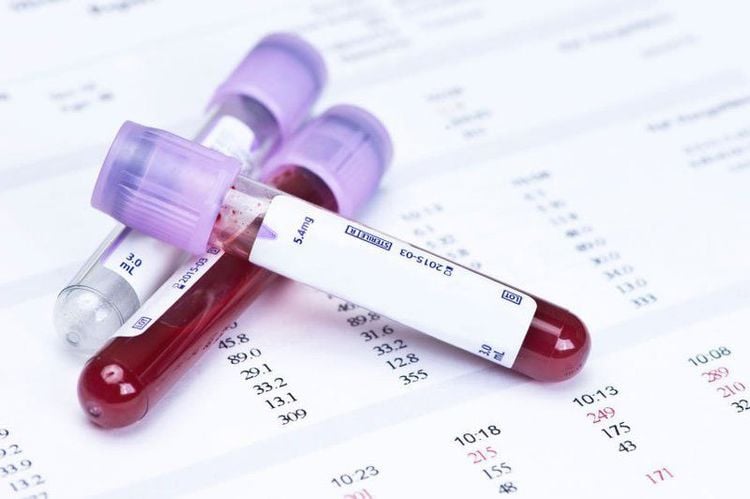
Xét nghiệm máu ngoại vi để tìm nguyên nhân gây chảy máu ồ ạt
Besides blood tests, a number of imaging tests may be ordered to detect massive but discreet bleeding. The most typical is a CT scan of the brain when there are signs suggestive of intracranial hemorrhage such as severe headache, impaired consciousness, focal neurological signs or after head trauma. Abdominal CT is necessary in patients with severe abdominal pain or signs suggestive of intra-abdominal or retroperitoneal bleeding.
Uncontrolled massive bleeding can be a sign of many dangerous diseases. Therefore, in case the patient shows this sign, relatives should soon take them to specialized medical centers for early diagnosis and timely treatment.
Cardiology Department at Vinmec International General Hospital is one of the prestigious health care centers for examination, screening and treatment of intensive diseases in Vietnam. Therefore, if there are signs of uncontrolled bleeding, you can call an ambulance or ask your loved ones to take you to Vinmec International General Hospital for examination, diagnostic tests and support. , timely advice from doctors.
Please dial HOTLINE for more information or register for an appointment HERE. Download MyVinmec app to make appointments faster and to manage your bookings easily.




